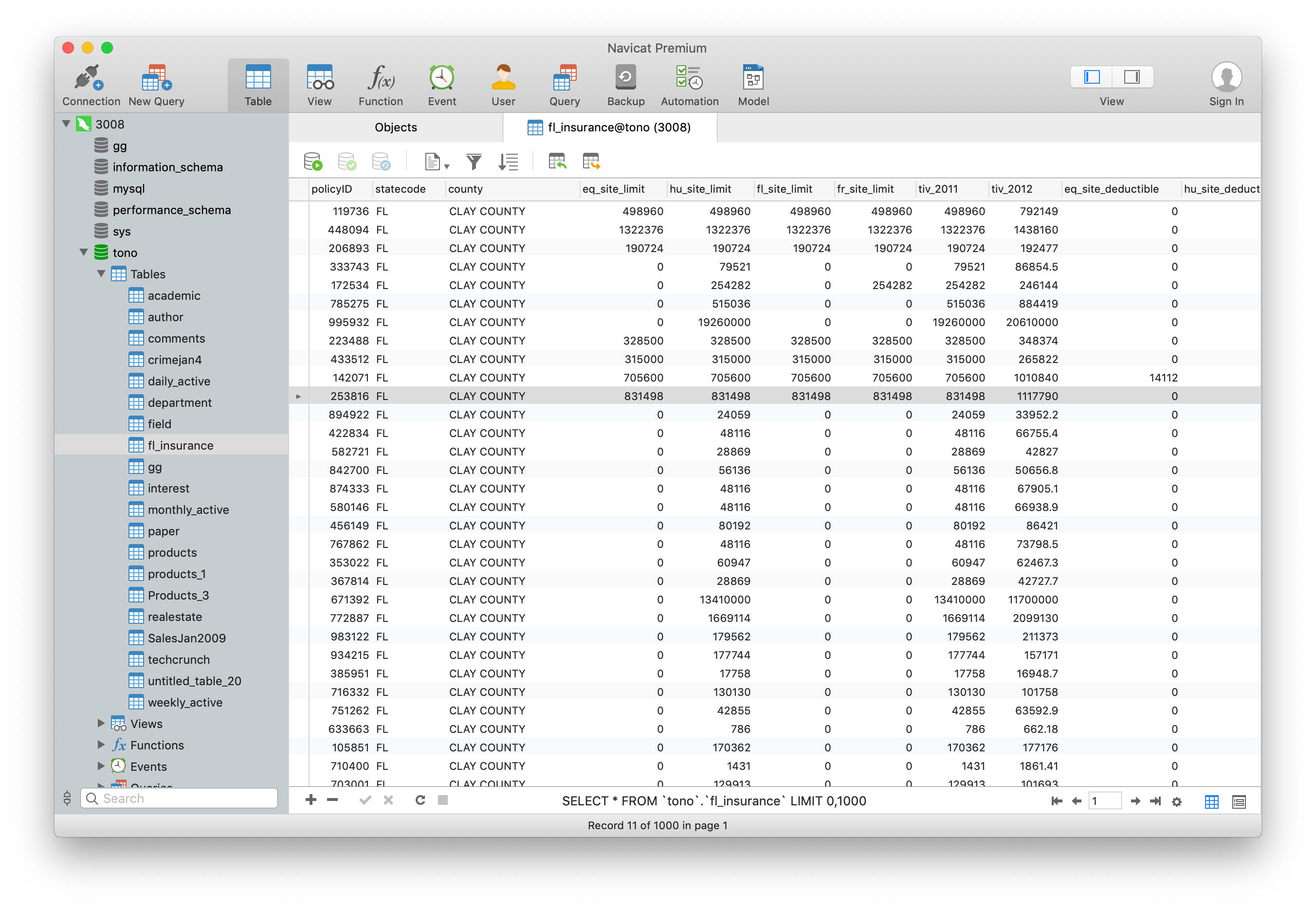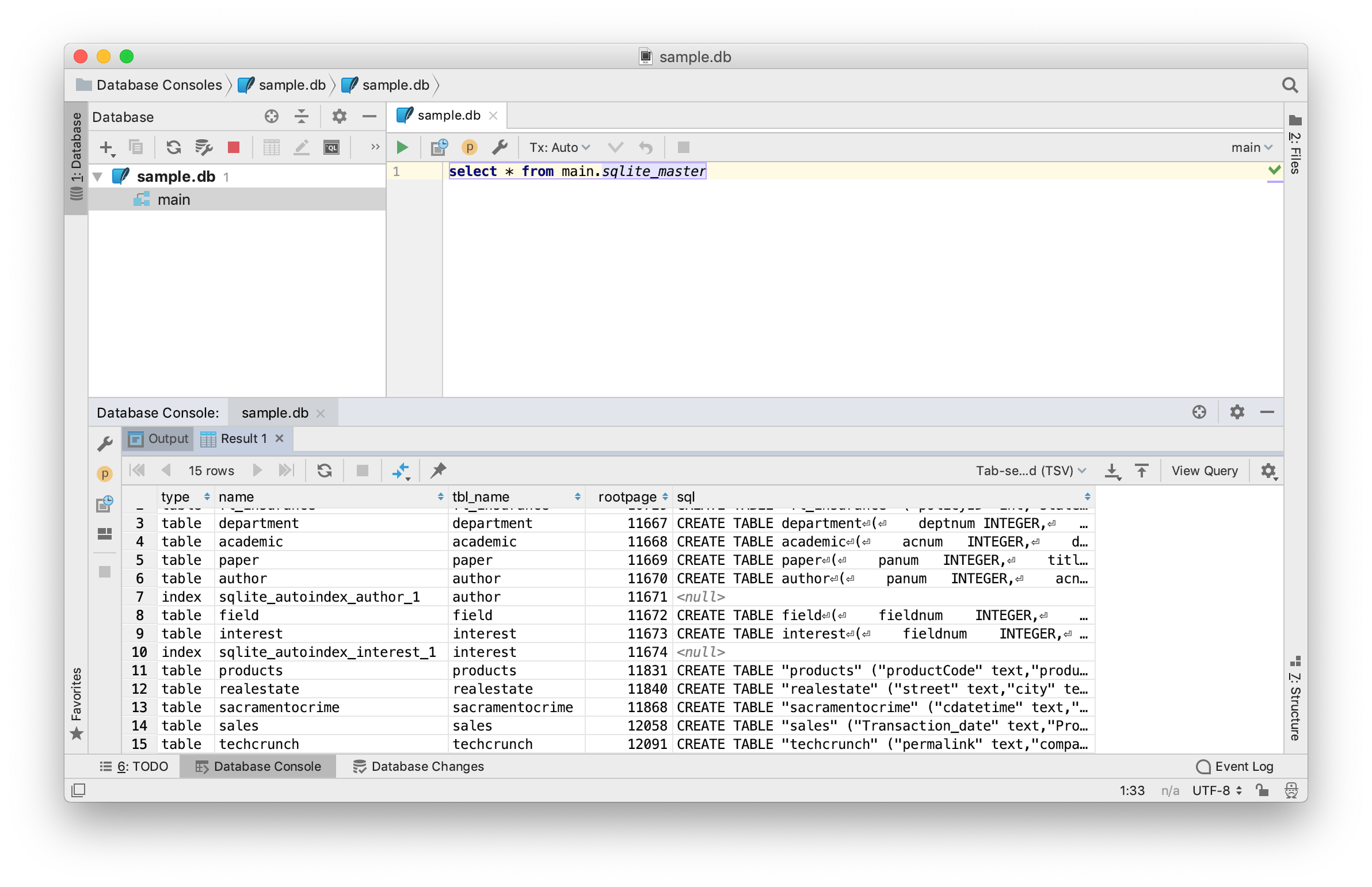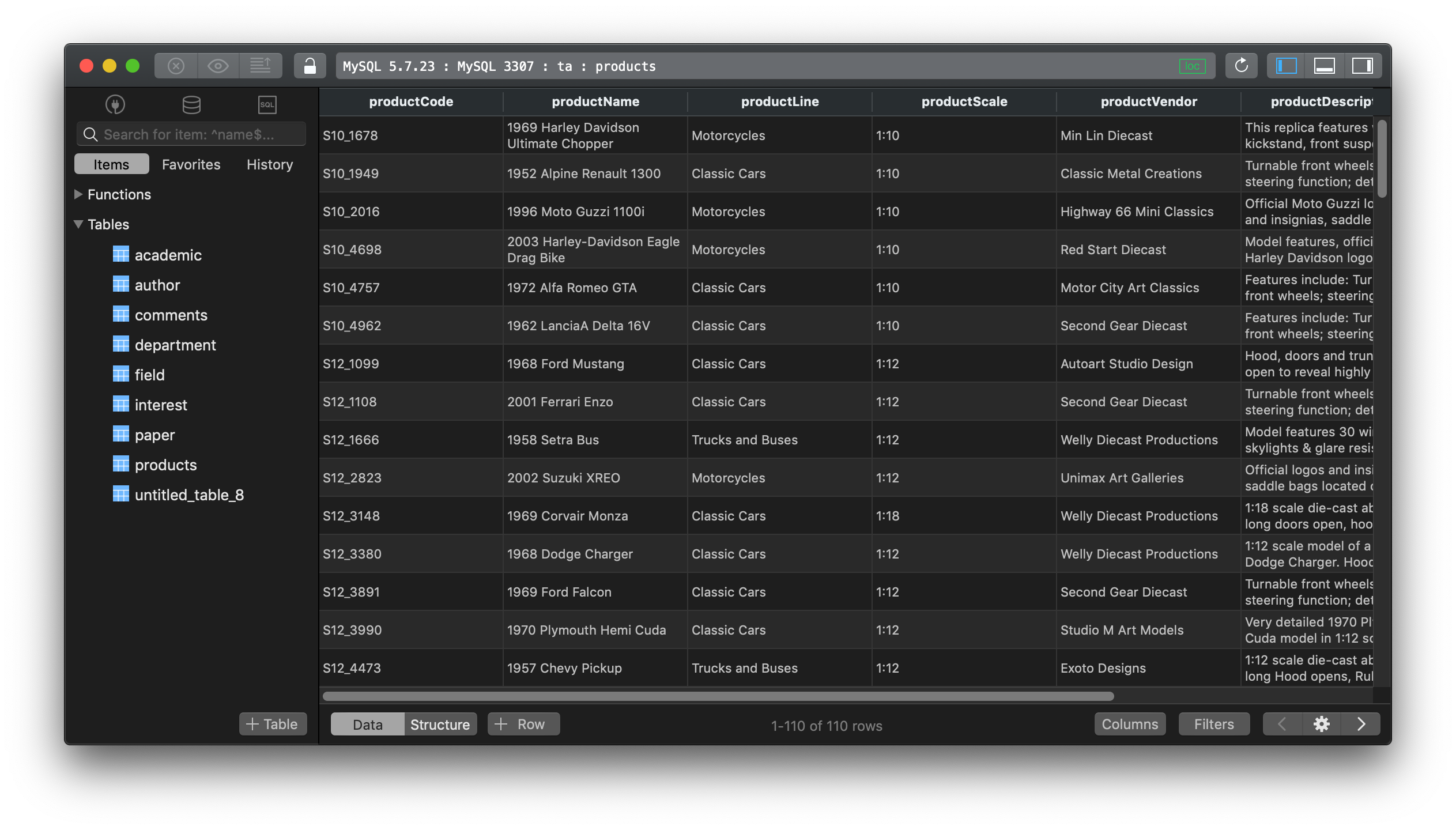Navicat vs DataGrip vs TablePlus - Quick Comparison
In this post, we are going to have a quick comparison between the three databases GUI clients: Navicat, DataGrip, and TablePlus, including pros and cons of each tool.
1. Navicat
Navicat offers a powerful tool for both database development and administration.
-
Supported platforms: Navicat is cross-platform. It’s available on Mac, Windows, Linux. Navicat also has its iOS versions.
-
Supported Drivers: Navicat supports several popular databases: MySQL, MariaDB, MongoDB, Oracle, SQLite, PostgreSQL, and Microsoft SQL Server.
-
Pricing: Navicat is a commercial application with 14 days trial and it has many pricing schemes. You can either buy a special edition for MySQL with $119 for Non-Commercial Edition, $199 for Standard Edition, and $299 for Enterprise Edition; or you can buy Navicat Premium to work with all supported drivers at the price of $1299 for Enterprise Edition and $599 for Non-Commercial Edition.

Pros:
- It’s cross-platform and supports multiple drivers.
- Data and structure synchronization
- Visual query builder and report builder
- Excellent import/export options
- Supports many languages, including Polish, Russian, Japanese, Portuguese, Korean, Simplified Chinese, Traditional Chinese, Spanish, French, and English
- Compatible with other Navicat products: Navicat Monitor, Navicat Data Modeler, Navicat Report Viewer, and Navicat Data Model Essentials.
Cons:
- It’s expensive. A single machine license for the most standard version (MySQL) is already $299. If you work with more than one drivers, such as PostgreSQL, SQL Server, or SQLite, you will end up purchase the Navicat premium package at $1,299.
- It’s one of the most resource-intensive tools. It’s heavy and will consume a large portion of memory to run.
- Very few shortcut keys.
- The development cycle is very long, a new version is released every one or two year.
2. DataGrip
DataGrip provides robust tools that streamline SQL code writing and make the entire process more efficient.
-
Supported platforms: DataGrip is cross-platform. It works well on macOS, Linux, and Windows.
-
Supported Drivers: DataGrip supports a whole lot of databases: Postgres, MySQL, Oracle, SQL Server, Azure, Redshift, SQLite, DB2, H2, Sybase, Exasol, Derby, MariaDB, HyperSQL, Clickhouse.
-
Pricing: DataGrip is also a commercial product with 30 days trial. The subscription service costs $8.9/mo for an individual and $19.9/mo/user for a business.

Pros:
- It supports multiple drivers
- It has smart context-sensitive and schema-aware code completion.
- A visual table editor lets you add, remove, edit, and clone data rows.
- It has version control support
- Refactoring support
Cons:
- It’s not user-friendly. It takes time to learn how to use it.
- It doesn’t run fast, compared to similar tools. It will be very sluggish when working with high-volume databases. It can use up to several GB’s of memory.
3. TablePlus
With a native build, TablePlus is a very powerful yet lightweight tool for querying, editing, and managing multiple databases.
-
Supported platforms: TablePlus is built native for each platform. It started out with a native version for Mac, then another version for Windows, and a version for Linux was introduced recently as an alpha release. It also has an iOS version.
-
Supported Drivers: TablePlus supports a handful of relational databases: MySQL, PostgreSQL, SQLite, Microsoft SQL Server, Amazon Redshift, MariaDB, CockroachDB, Vertica, Oracle; and two popular NoSQL databases: Cassandra and Redis.
-
Pricing: TablePlus has a free version with full set of features which you can download and use forever, but there are some usage limitations. If you use it heavily, the license costs $59 to remove all those limitations.

Pros:
- Native build for each platform so it’s fast, lightweight, and stable.
- Clean and simple interface.
- Multiple drivers support
- Multiple conditions data filter
- Queries history and keyword binding favorite.
- Streaming results and async loading to show queries results faster and doesn’t block the UI.
- Very quick inline editing for table data and structure, you also can edit query results directly.
- Smart query editor with highlight syntax, instant autocomplete, SQL reformat.
- Multiple carets
- A plugin system to extend the app.
- Quick support. TablePlus releases new updates regularly and responds to users’ requests almost immediately.
Cons:
It currently lacks of some advanced features such as ER Diagram, database compare tool to Diff and Sync, etc.
4. Conclusion
Go with Navicat & Datagrip if you:
- Are comfotable with paying a high tier cost
- Need a full-featured tool
- Don’t mind the slugginess
Go with TablePlus if you:
- Are a fan of native experience
- Work with multiple databases
- Want a modern design with better usability
- Want quick support & development cycle.